
Dangerously hot temperatures take hold of Central Canada this week
Folks in Ontario and Quebec will want to avoid strenuous activities in the outdoors this week, especially if they are vulnerable to the heat, as temperatures and humidity will soar to dangerous values
We're just days away from the summer solstice, and Ontario and Quebec are getting an early head start on the season.
Temperatures will jump into the 30s for most of Central Canada this week, as potentially record-setting, and dangerous, heat moves into the region.
DON’T MISS: Why extreme heat is one of the world’s deadliest weather disasters
Tuesday through Thursday will see the heat peak as daytime high temperatures jump into the lower to middle 30s. Humidex values will be even higher, expected to soar into the mid-40s in the Greater Toronto and Hamilton Area, in and near Ottawa, and across Montreal.
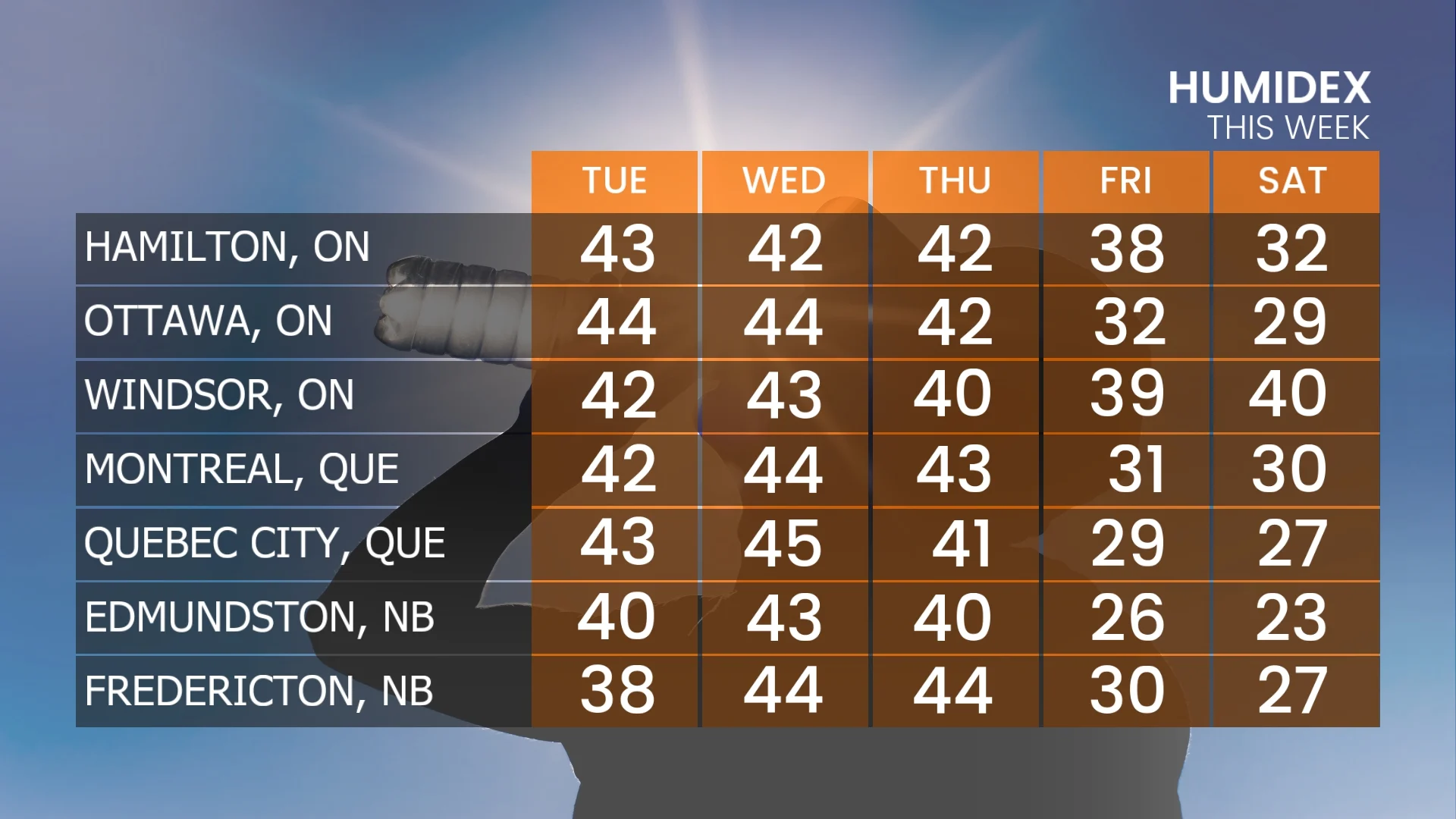
Watch out for heat-related impacts, such as heat exhaustion and/or heat stroke. Remember to drink plenty of water. Avoid strenuous work outdoors.
The heat and humidity will also fuel daily thunderstorm risks, so people will need to be weather-aware.
Major heat builds over the region
This week’s heat wave could break records across Ontario and Quebec as a strong ridge of high pressure builds over the eastern U.S. and the Great Lakes.
Air sinks beneath a strong ridge, warming up as it descends toward the surface. Hot, muggy winds blowing straight from the Gulf of Mexico will add tropical humidity to the mix.
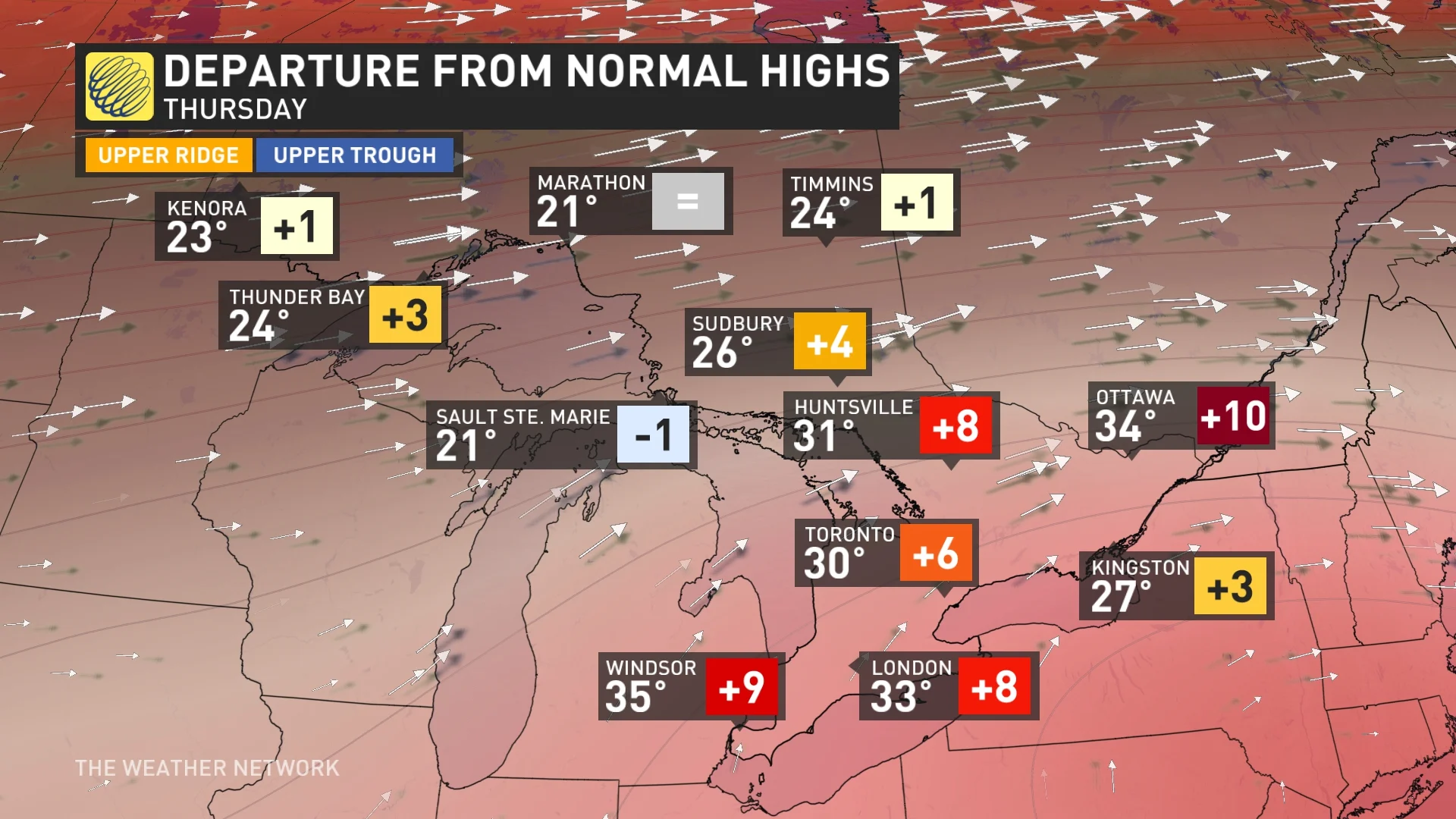
DON'T MISS: This simple trick may save many kids' lives during a heat wave
Between the ridge and the humidity combined, we’re in for a days-long stretch of hot daytime highs and little to no relief from the stuffy air at night.
The heat arrives in earnest Tuesday through Thursday as daytime high temperatures climb into the lower to middle 30s for just about everyone throughout southern Ontario and southern Quebec.
RELATED: How the humidex is calibrated to your body
Humidex values could climb as high as the mid-40s throughout the Greater Toronto and Hamilton Area, in and around Ottawa, and across Montreal.
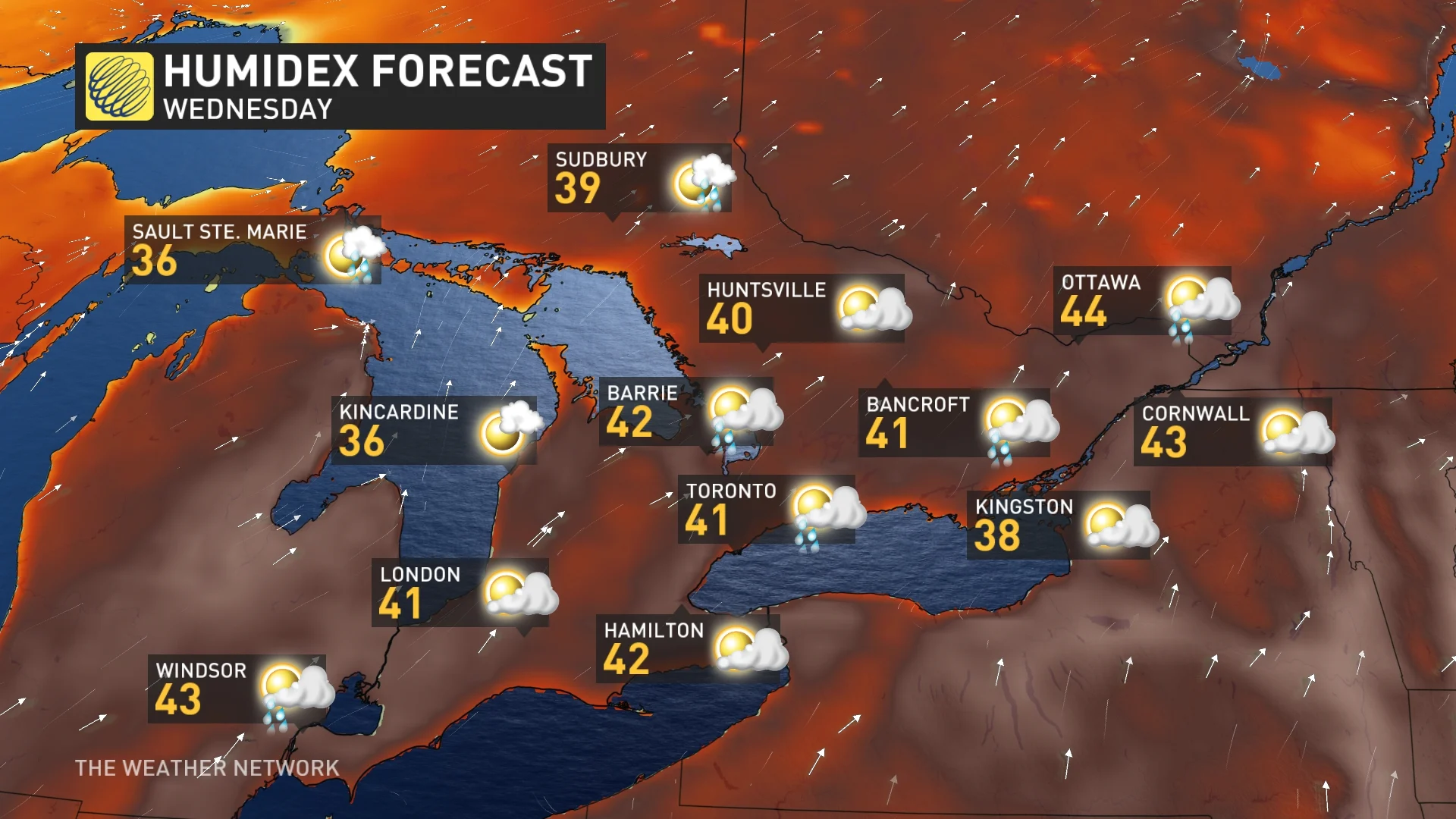
Toronto-Pearson could rival its all-time highest June humidex value on record. The current monthly record is 45.6 set on June 30, 2018. The highest humidex forecast this week tops out at 44.
Air quality in the region will likely suffer due to this stagnant, humid air mass.
This level of heat could cause heat-related illnesses in even healthy individuals.

The only potential relief from this predicted heat will come from scattered thunderstorms that may erupt in the hot and humid air parked over Ontario and Quebec. Any storms or clouds will help to cap daytime temperatures, even if only for a little while.
SEE ALSO: There’s a dog in a hot vehicle! What should I do?
WATCH: Most surprising ways to beat the heat this summer
Increased potential for heat-related illnesses
Extreme heat is a leading weather-related cause of death around the world, claiming more lives every year than tornadoes and hurricanes combined. Hot temperatures are truly a silent killer.
Folks who are highly susceptible to the heat include those in homes without air conditioning, elderly people, unhoused people, outdoor workers, those living with chronic health conditions, and folks taking certain medications.
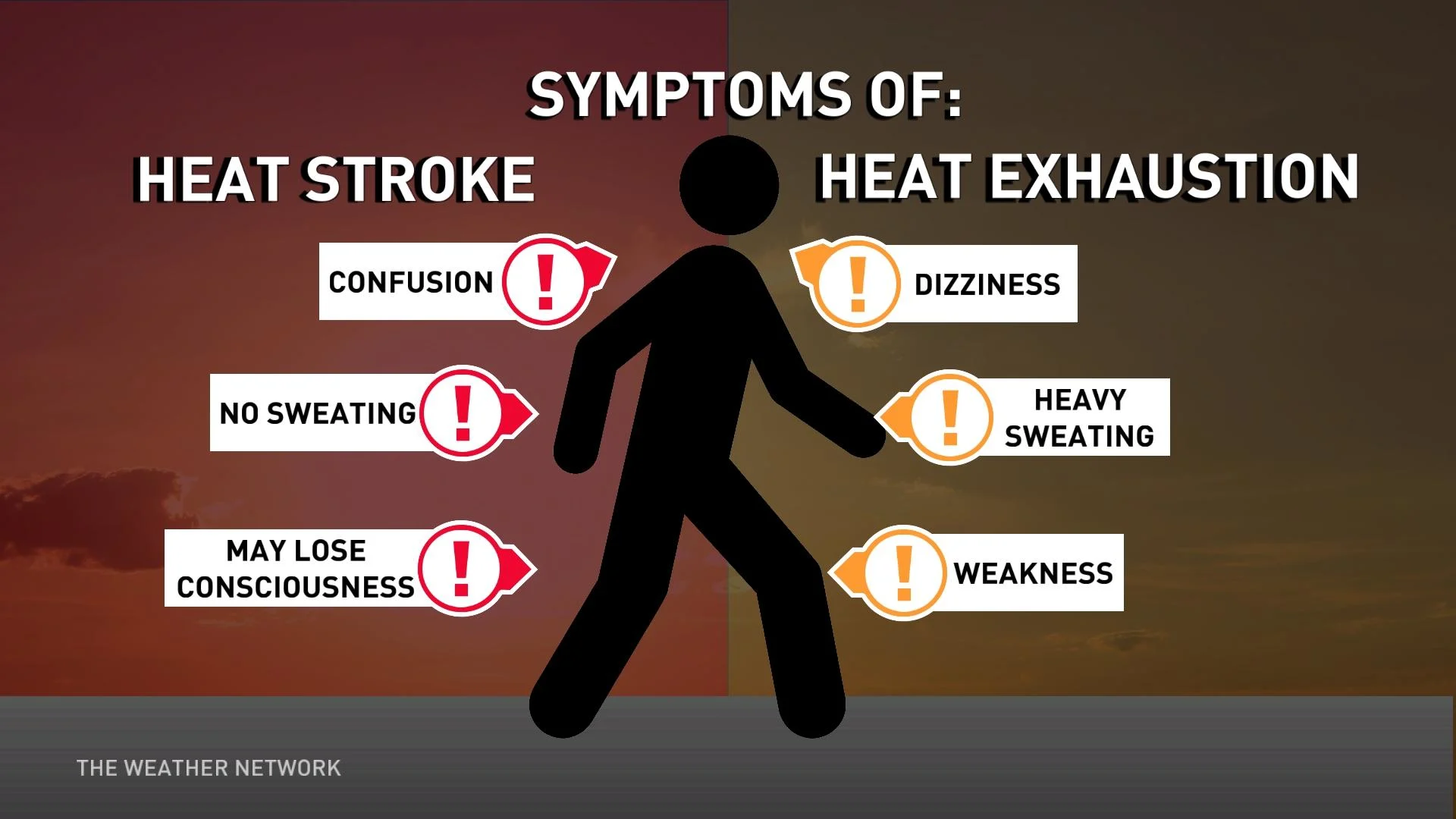
Check on vulnerable friends, family, and neighbours over the coming week. Stay alert for the signs of heat-related illnesses.
MUST SEE: Heat emergencies: How to spot them and what to do
Heat exhaustion occurs when a person’s body temperature climbs too high and they struggle to cool off. Symptoms of heat exhaustion include dizziness, excessive sweating, and weakness. Developing heat exhaustion is a serious sign that your body is in distress and you need to find a way to cool off immediately.
Heat stroke is a life-threatening medical emergency that occurs when a person’s body temperature is so high that their vital systems begin to shut down.
During heat stroke, sweat production stops and body temperatures soar very quickly. A victim suffering from heat stroke may exhibit confusion and loss of consciousness. Heat stroke can be fatal if not treated immediately.
Why heat waves aren’t ‘just summer weather’
The risk for heat-related illnesses will sharply increase during this upcoming heat wave as a result of the expected duration of hot temperatures and high humidity.
Humid air retains heat better than dry air, so nighttime temperatures won’t cool off enough to provide meaningful relief for folks without reliable access to air conditioning.
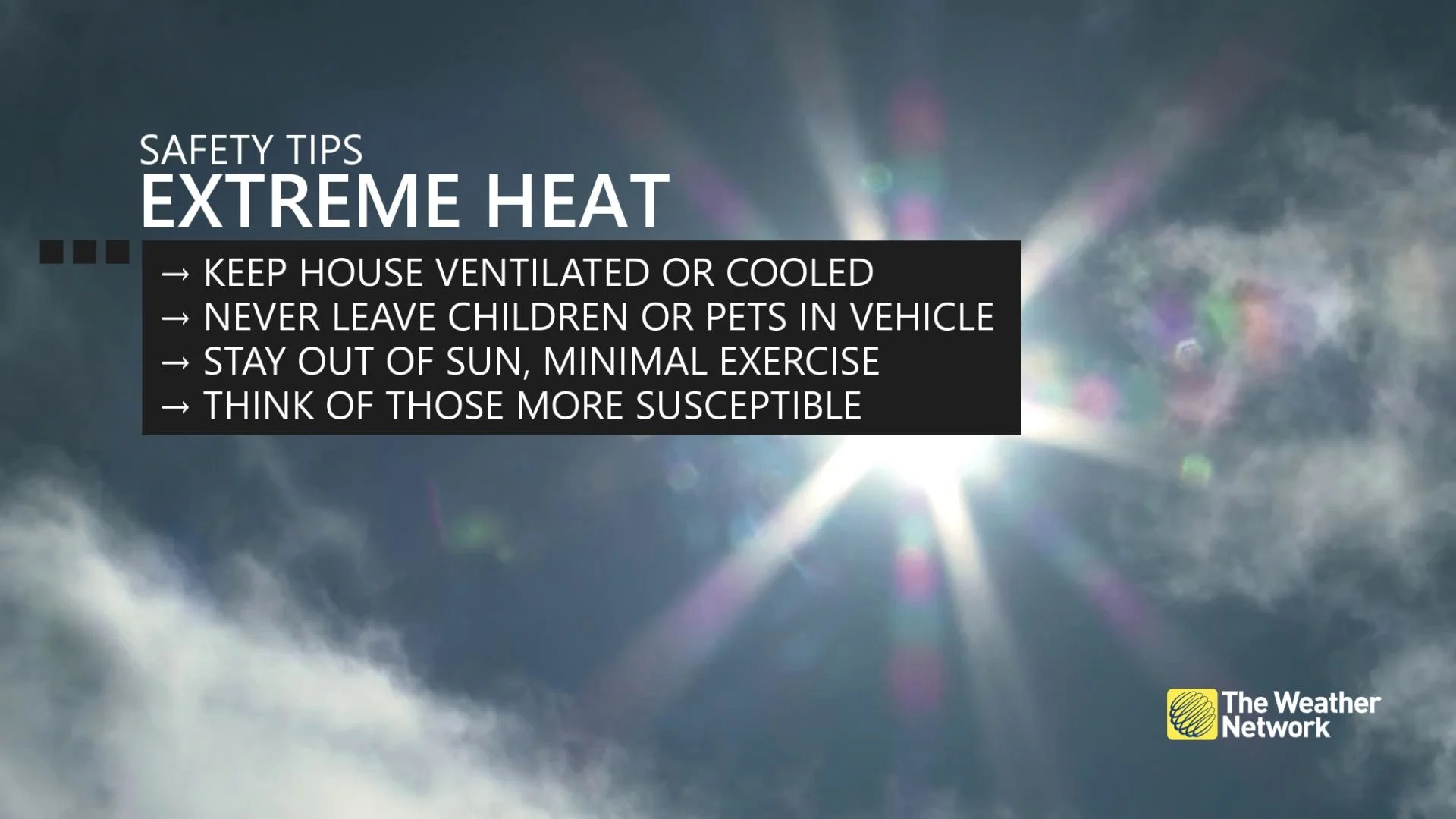
SEE ALSO: Five horrible things extreme heat does to the human body
Hot days running into stuffy nights will compound the effects of high heat on the human body, resulting in an increased potential for heat exhaustion and heat stroke.
Simply circulating air with fans won’t be enough to provide necessary relief from this level and duration of high heat. Air conditioning is a vital survival tool during a days-long heat wave.
Take advantage of community cooling centres if they’re available. Stay well-hydrated throughout the week, and avoid strenuous work outdoors during the heat of the day.
Stay with The Weather Network for all the latest on this impending heat wave.
Thumbnail image courtesy: Getty Images










